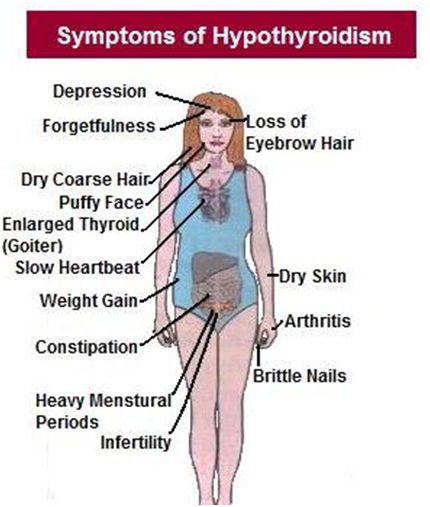Exercise At Any Size
Do you feel that you can barely do any activity at all?
That you cannot exercise, play sports, or become more fit?
If you are a very large person, you can still be physically
active. Very large people face special challenges in trying to
be active. You may not be able to bend or move in the same way
that other people can. It may be hard to find clothes and
equipment for exercising. You may feel self-conscious being
physically active around other people.
Facing these challenges is hard—but it can be done! The
information in this booklet may help you start being more active
and healthier—no matter what your size!
Why should I be active? ======================= Being physically
active may help you live longer and protect you from: * diabetes
* heart disease and stroke * high blood pressure * osteoporosis
(a disease leading to weak bones that may break easily)
If you have any of these health problems, being physically
active may help control or improve your symptoms.
Regular physical activity helps you feel better because it: *
lowers your stress and boosts your mood * increases your
strength * helps control blood pressure and blood sugar * helps
build healthy bones, muscles, and joints * helps your heart and
lungs work better * improves your self-esteem.
Being physically active can be big fun!
How do I get started? =====================
To start being more active and keep at it: * Start slowly. Your
body needs time to get used to your new activity.
* Warm up. Warm-ups get your body ready for action. Shrug your
shoulders, tap your toes, swing your arms, or march in place.
You should spend a few minutes warming up for any physical
activity—even walking. Walk more slowly for the first few
minutes.
* Cool down. Slow down little by little. If you have been
walking fast, walk slowly or stretch for a few minutes to cool
down. Cooling down may protect your heart, relax your muscles,
and keep you from getting hurt.
* Set goals. Set short-term and long-term goals. A short-term
goal may be to walk 5 minutes on at least 3 days for 1 week. It
may not seem like a lot, but any activity is better than none. A
long-term goal may be to walk 30 minutes on most days of the
week by the end of 6 months.
* Get support. Get a family member or friend to be physically
active with you. It may be more fun, and your buddy can cheer
you on.
* Track progress. Keep a journal of your physical activity. You
may not feel like you are making progress but when you look back
at where you started, you may be pleasantly surprised!
•Have fun! Try different activities to find the ones you really
enjoy..
What physical activities can a very large person do?
=====================================================
Most very large people can do some or all of the physical
activities in this article. You do not need special skills or a
lot of equipment.
You can do: * Weight-bearing activities, like walking and
golfing, which involve lifting or pushing your own body weight.
* Non-weight-bearing activities, like swimming and water
workouts, which put less stress on your joints because you do
not have to lift or push your own weight. If your feet or joints
hurt when you stand, non-weight-bearing activities may be best
for you.
* Lifestyle activities, like gardening, which do not have to be
planned.
Physical activity does not have to be hard or boring to be good
for you. Anything that gets you moving around—even for only a
few minutes a day—is a healthy start to getting more fit.
Chances are your health care provider will be pleased with your
decision to start an activity program. It is unlikely that you
will need a complete medical exam before you go out for a short
walk!
Gentle physical activity is healthy.
=====================================
You do not have to push yourself to benefit from physical
activity. Thirty minutes of gentle physical activity (like
walking) can be just as healthy as 15 minutes of intense
physical activity (like fast dancing).
Walking (weightbearing) =======================
The walking that you do during the day (like doing chores around
the house or in the yard) can help you be more fit. But regular,
steady walking that makes you breathe heavier can help you to be
healthier. It will give your heart and lungs—as well as your leg
muscles—a good workout.
If you are not active now, start slowly. Try to walk 5 minutes a
day for the first week. Walk 8 minutes the next week. Stay at
8–minute walks until you feel comfortable. Then increase your
walks to 11 minutes. Slowly lengthen each walk by 3 minutes—or
walk faster.
Tips for walking: * Wear comfortable walking shoes with a lot of
support. If you walk often, you may need to buy new shoes every
6 to 8 months.
* Wear garments that prevent inner thigh chafing, such as tights
or spandex shorts.
* Make walking fun. Walk with a friend or pet. Walk in places
you enjoy, like a park or shopping mall.
Dancing (weight-bearing or non-weight-bearing)
==============================================
Dancing may help: * tone your muscles * improve your flexibility
* make your heart stronger * make your lungs work better. You
can dance in a health club, in a nightclub, or at home. To dance
at home, just move your body to some lively music!
Dancing on your feet is a weight-bearing activity. Dancing while
seated lets you move your arms and legs to music while taking
the weight off your feet. This may be a good choice if you can’t
stand on your feet very long.
Water Workouts (non-weight-bearing)
===================================
Exercising in water helps you feel: – Flexible. You can bend and
move your body in water in ways you cannot on land. – Strong.
Working against the water will help your body get stronger. – At
less risk of injury. Water makes your body float. This keeps
your joints from being pounded or jarred and helps prevent sore
muscles and injury. – Refreshed. You can keep cooler in
water—even when you are working hard.
You do not need to know how to swim to work out in water—you can
do shallow-water or deep-water exercises without swimming.
For shallow-water exercise, the water level should be between
your waist and your chest. If the water is too shallow, it will
be hard to move your arms underwater. If the water is deeper
than chest height, it will be hard to keep your feet touching
the pool bottom.
For deep-water exercise, most of your body is underwater. This
means that your whole body will get a good workout. For safety
and comfort, wear a foam belt or life jacket.
Many swim centers offer classes in water workouts. Check with
the pools in your area to find the best water workout for you.
Weight Training (weight-bearing or non-weight-bearing)
======================================================
Weight training builds strong muscles and bones. Getting
stronger can also help prepare you for other kinds of physical
activity. You can weight train at home or at a fitness center.
You do not need benches or bars to begin weight training at
home. You can use a pair of hand weights or even two soup cans.
Make sure you know the correct posture and that your movements
are slow and controlled.
Before you buy a home gym, check its weight rating (the number
of pounds it can support) to make sure it is safe for your size.
If you want to join a fitness center where you can use weights,
shop around for one where you feel at ease. Weight training rule
of thumb.
If you cannot lift a weight 6 times in a row, the weight you are
lifting is too heavy. If you can easily lift a weight 15 times
in a row, your weight is too light.
Bicycling (non-weight-bearing) ==============================
You can bicycle indoors on a stationary bike, or outdoors on a
road bike. Biking does not stress any one part of the body—your
weight is spread between your arms, back, and hips.
You may want to use a recumbent bike. On this type of bike, you
sit low to the ground with your legs reaching forward to the
pedals. This may feel better than sitting upright. The seat on a
recumbent bike is also wider than the seat on an upright bike.
For biking outdoors, you may want to try a mountain bike. These
bikes have wider tires and are heavy. You can also buy a larger
seat to put on your bike. Make sure the bike you buy has a
weight rating at least as high as your own weight..
Stretching (weight-bearing or non-weight-bearing)
=================================================
Stretching may help you: * be more flexible * feel more relaxed
* improve your blood flow * keep your muscles from getting tight
after doing other physical activities.
You do not have to set aside a special time or place to stretch.
At home or at work, stand up, push your arms toward the ceiling,
and stretch. Stretch slowly and only enough to feel
tightness—not until you feel pain. Hold the stretch, without
bouncing, for about 30 seconds. Do not stretch cold muscles.
Yoga and tai chi are types of stretching. They help you breathe
deeply, relax, and get rid of stress.
Your local fitness center may offer yoga, tai chi, or other
stretching classes. You may want to start with “gentle” classes,
like those aimed at seniors.
Questions to ask when choosing a fitness center.
—Can the treadmills or benches support people who are large? —Do
the fitness staff know how to work with people of larger sizes?
—Can I take time to see how I like the center before I sign up?
—Is the aim to have fun and get healthy—not to lose weight?
Lifestyle Activities ====================
Lifestyle physical activities do not have to be planned. You can
make small changes to make your day more physically active and
improve your health. For example, * Take 2- to 3-minute walking
breaks at work a few times a day. * Put away the TV remote
control—get up to change the channel. * March in place during TV
commercials. * Sit in a rocking chair and push off the floor
with your feet. * Take the stairs instead of the elevator.
Doing chores like lawn mowing, leaf raking, gardening, and
housework may also improve your health.
Stop your activity right away if you: * have pain, tightness, or
pressure in your chest or left neck, shoulder, or arm * feel
dizzy or sick * break out in a cold sweat * have muscle cramps *
feel pain in your joints, feet, ankles, or legs. You could hurt
yourself if you ignore the pain.
Ask your health care provider what to do if you have any of
these symptoms. Slow down if you feel out of breath. You should
be able to talk during your activity, without gasping for breath.
Drink lots of water before, during, and after physical activity
(even water workouts) to replace the water you lose by sweating.
Do not do hard exercise for 2 hours after a big meal (but taking
a walk is OK). If you eat small meals, you can be physically
active more often.
Wear the right clothes: * Wear lightweight, loose-fitting tops
so you can move easily. * Wear clothes made of fabrics that
absorb sweat and remove it from your skin. * Never wear rubber
or plastic suits. Plastic suits could hold the sweat on your
skin and make your body overheat. * Women should wear a good
support bra. * Wear supportive athletic shoes for weight-bearing
activities. * Wear a knit hat to keep you warm when you are
physically active outdoors in cold weather. Wear a tightly
woven, wide-brimmed hat in hot weather to help keep you cool and
protect you from the sun. * Wear sunscreen when you are
physically active outdoors.
Healthy, fit bodies come in all sizes. Whatever your size or
shape, get physically active now and keep moving for a healthier
life!
Applaud yourself! =================
If you can do only a few or none of these activities, it’s OK.
Remember to appreciate what you can do, even if you think it’s a
small amount. Just moving any part of your body—even for a short
time—can make you healthier.
Safety Tips ===========
Drink plenty of water. Water helps every cell and organ in your
body work. It cushions your joints, helps keep you regular, and
keeps your body cool.
Appreciate Yourself! ====================
If you cannot do an activity, don’t be hard on yourself. Feel
good about what you can do. Be proud of pushing yourself up out
of a chair or walking a short distance.
Pat yourself on the back for trying even if you can’t do it the
first time. It may be easier the next time!
- DON'T MISS
- Obesity Statistics
- How To “Choose” Weight Loss
- The Glycemic Index & Weight Loss Explained
- Glucagon and Aging – Breakfast How Not To Start The Day Part III
- Top 10 Small Changes that Equal Weight Loss
- Natural Weight Loss Fast
- How Does Phentermine Work
- Understanding the Risks of Liposuction
- Losing Weight: Healthier Wallet
- Best Weight Scales




